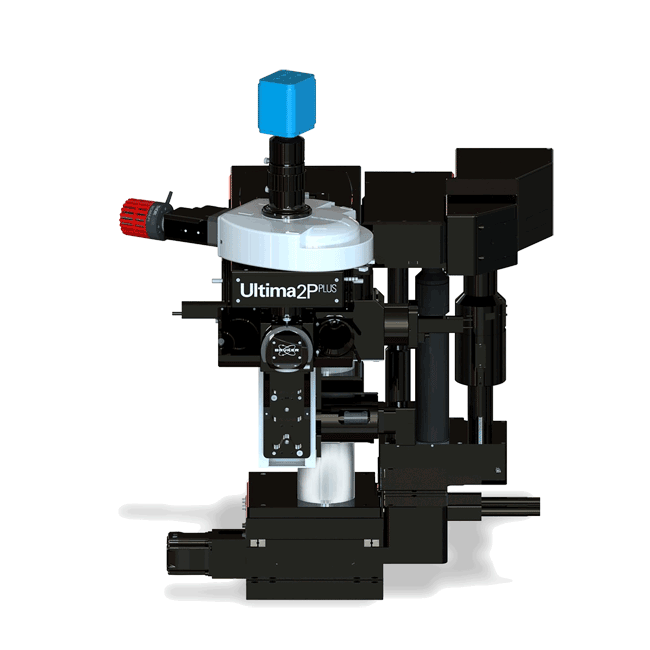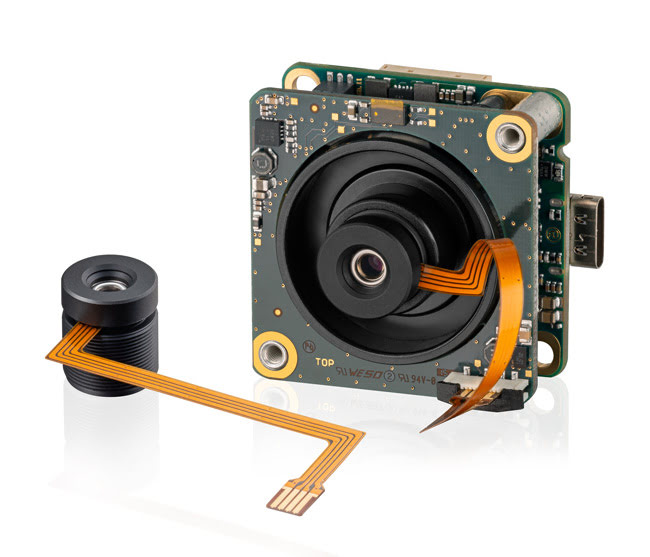| sponsor |
 |
|
Laser-Induced Avalanche Breakdown Detects Radioactive Material Remotely
A new method to identify radioactive material employs an IR laser beam to detect shielded material from a distance. The method, developed by physicists at the University of Maryland, improves upon current detection technologies that require close proximity to the radioactive material.
|
|
|
|
|
|
New Imaging Technique Could Help Diagnose, Monitor Retinal Disease
Researchers at the U.S. National Eye Institute (NEI) believe their adaptive optics indocyanine green (AO-ICG) imaging technique could be used to help diagnose and monitor the progression of eye diseases, and to preclinically detect cellular-level damage to the retinal pigment epithelium (RPE) by nondestructively charting changes in the fluorescent RPE mosaic over varying periods of time.
|
|
|
|
|
|
 Ultima 2Pplus Multiphoton Imaging
Ultima 2Pplus Multiphoton Imaging
Bruker Nano Surfaces
With new advances in field of view, sensitivity, wavelength, and sample accommodation, Bruker’s Ultima 2Pplus delivers the best commercially available combination of flexibility, resolution, imaging depth, and speed, allowing users to perform simultaneous imaging, stimulation, and electrophysiology protocols with...
Visit Website
Request Info
|
|
|
 Cameras with Liquid Lens Control
Cameras with Liquid Lens Control
IDS Imaging Development Systems GmbH
The low-cost uEye LE USB 3.1 Gen 1 board level cameras (6 MP or 18 MP sensor) from IDS are available as variants able to control liquid lenses. Users can easily and conveniently adjust the focus via the user interface or programming interface.
Visit Website
Request Info
|
|
|
|
|
|
Inverse-Designed Metastructures Operate with Light to Perform ‘Photonic Calculus'
A research team at the University of Pennsylvania has demonstrated a metamaterial device that can function as an analog computer. The researchers demonstrated that specially designed nanophotonic structures can take input waveforms encoded as complex mathematical functions, manipulate them, and provide an output that is the integral of the functions.
|
|
|
|
|
|
Measuring Quantum Back Action Could Improve Sensitivity of Gravitational-Wave Detectors
Researchers at Louisiana State University have defined a broadband, off-resonance measurement of quantum radiation pressure noise (QRPN) in the audio band, at frequencies relevant to gravitational-wave detectors. Their work could lead to methods to improve the sensitivity of gravitational-wave detectors by developing techniques to mitigate imprecision in back action measurements.
|
|
|
|
|
|
Arizona Optics Industry Continues Growth of Optics Valley Read Article
Liquid Crystal Metasurfaces Are the Heart of New Lidar Technology Read Article
II-VI and Finisar Move Closer to Merger Read Article
ZEISS, Microsoft Bring Real-Time Data to Production Line Read Article
Metalens Design Enables Reconfigurable Imaging Read Article
|
|
|
|
CLEO 2019
May 5-10, 2019 - San Jose McEnery Convention Center - San Jose United States
Photonics Media Booth: 2312
With comprehensive, peer-reviewed technical sessions and market-focused programming, CLEO is the world’s premier international forum to learn about innovative advances, research, and new technologies from the laser science industry. From quantum computing to advanced imaging technologies used to the search for new life and planets in the galaxy, CLEO brings together all aspects of electro-optic technologies. 200 companies exhibit at CLEO:EXPO, taking advantage of the annual industry-leading gathering to introduce new products and demonstrate cutting-edge innovations.
|
|
|
|

CALL FOR ARTICLES
Photonics Media is currently seeking technical feature articles on a variety of topics for publication in our magazines (Photonics Spectra, BioPhotonics, Vision Spectra, and EuroPhotonics). Please submit an informal 100-word abstract to editorial@Photonics.com, or use our online submission form.
|
|
|
|